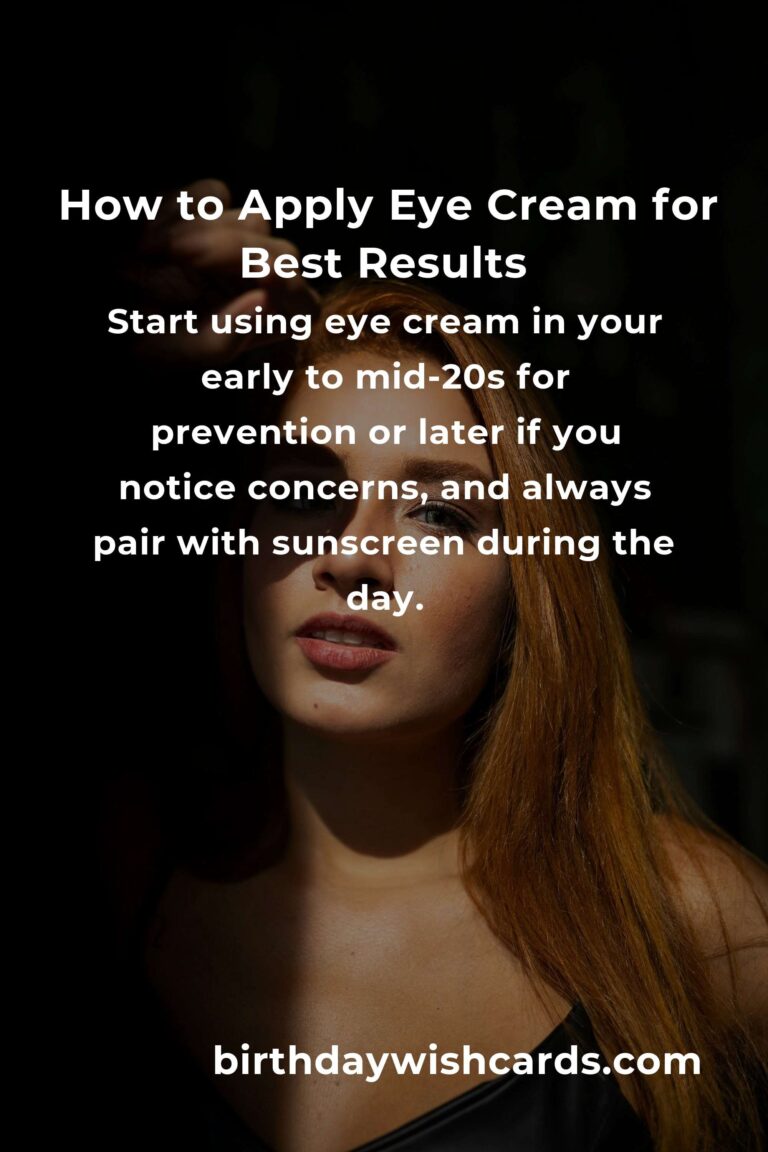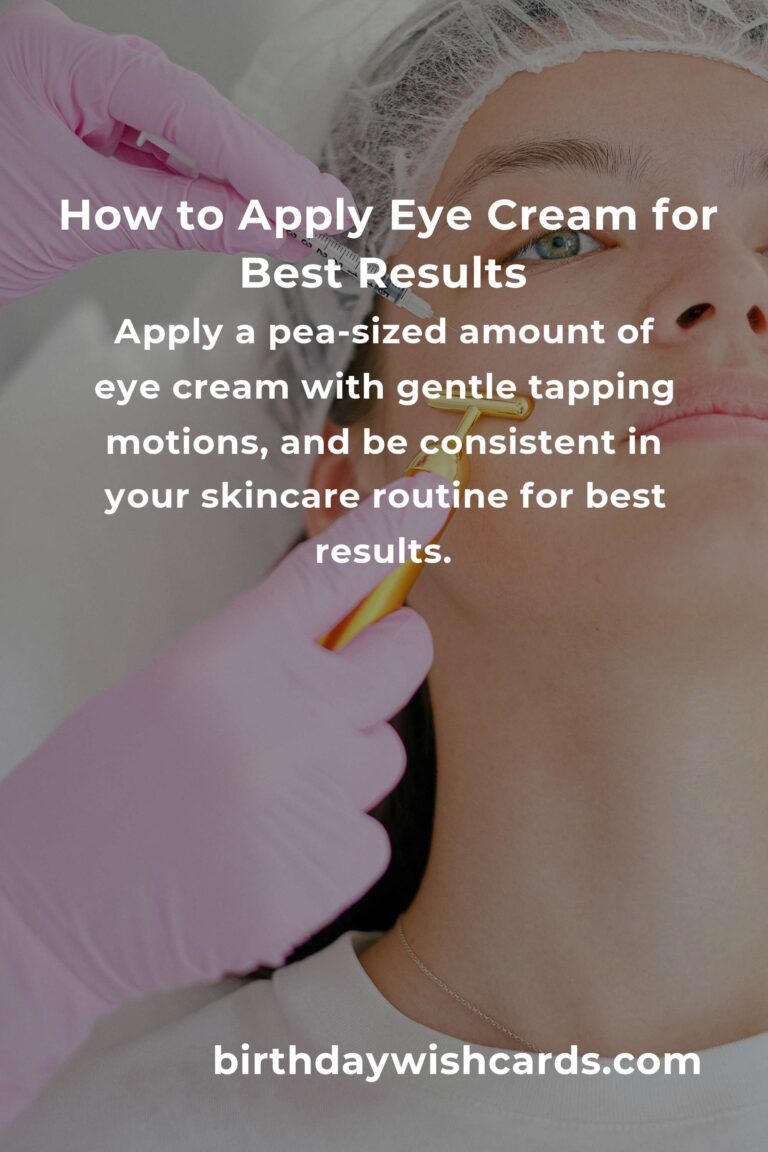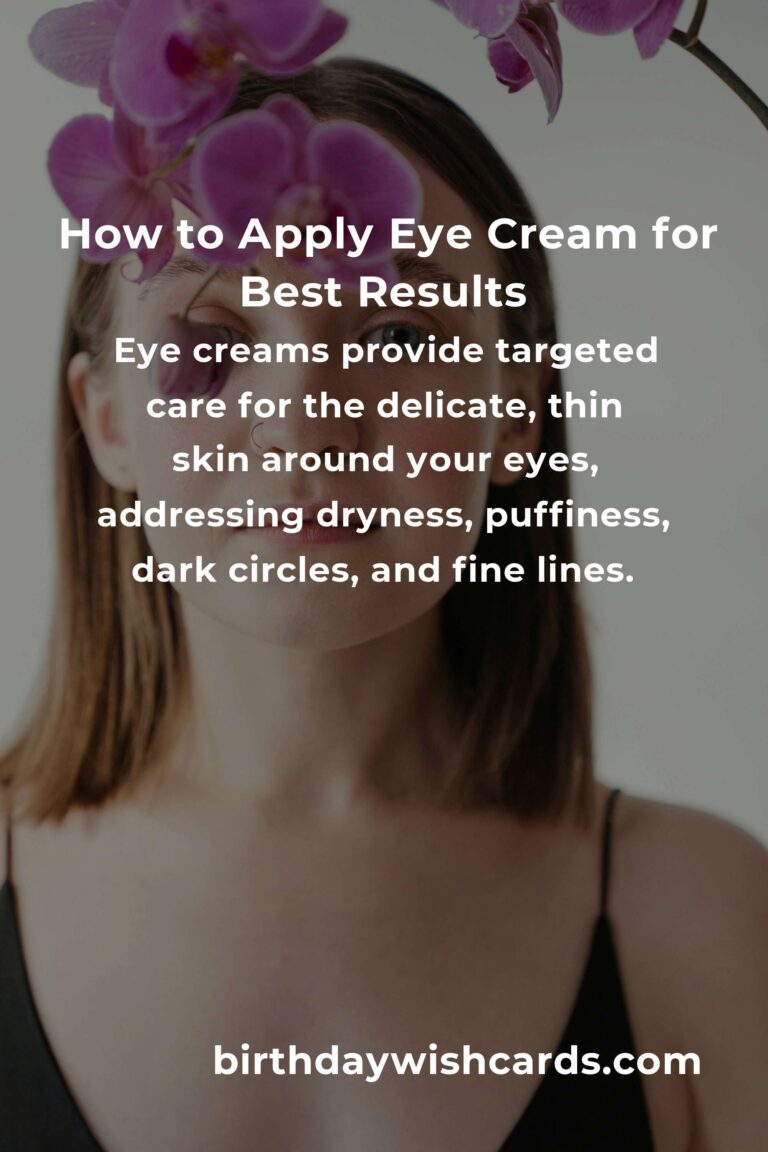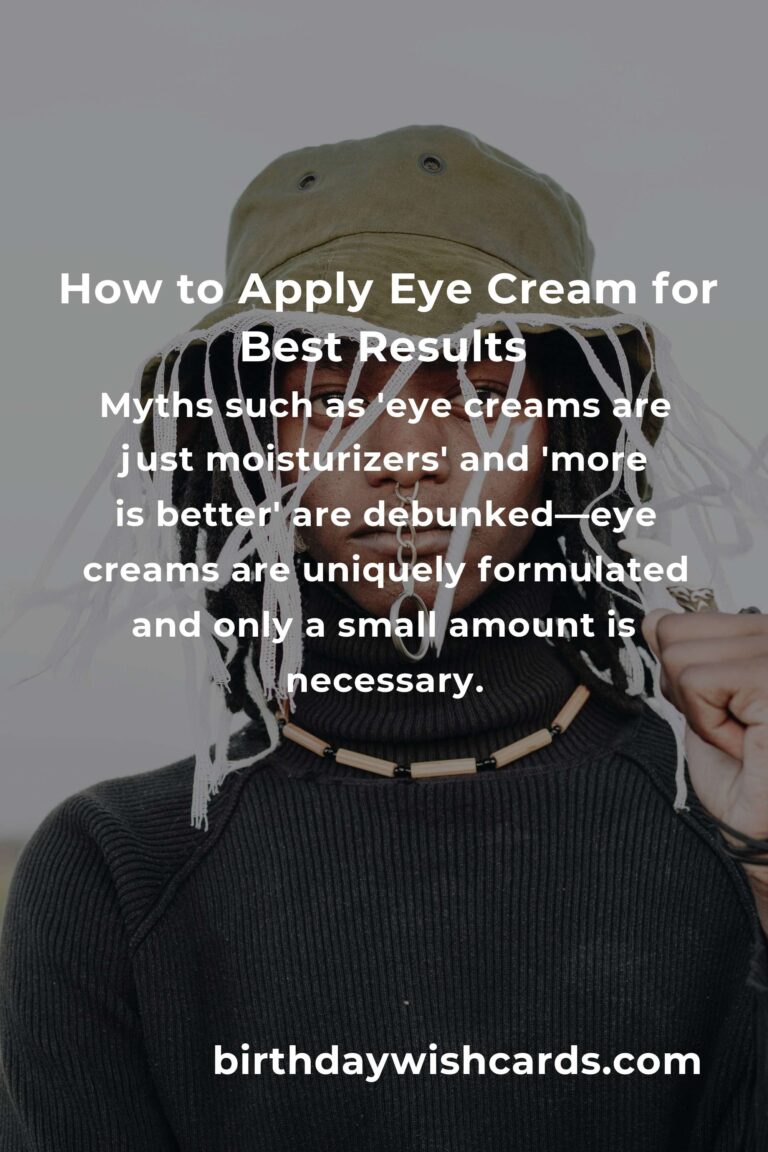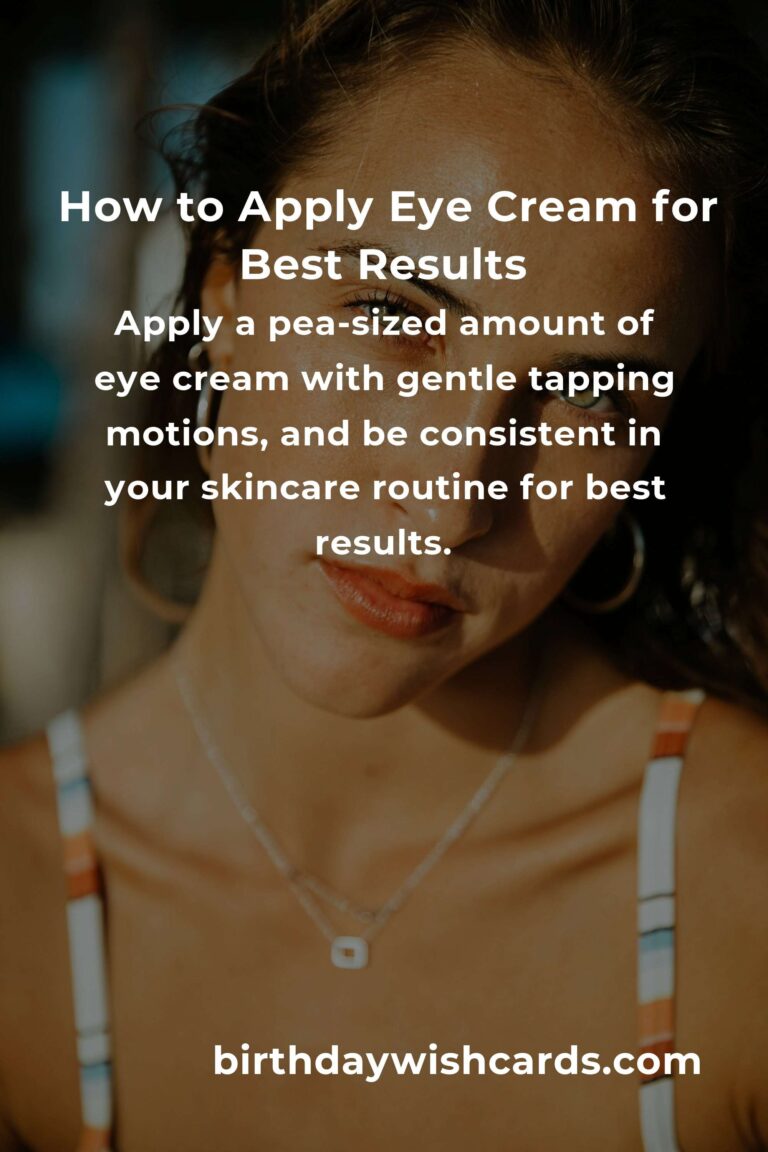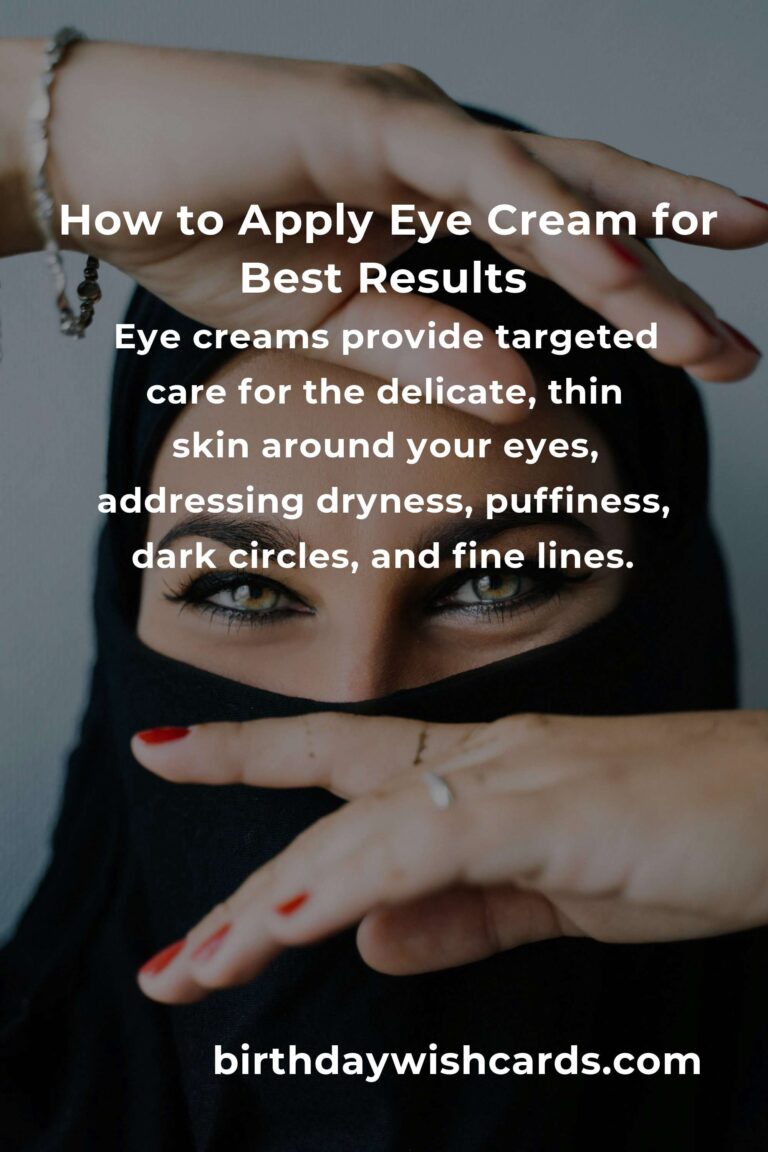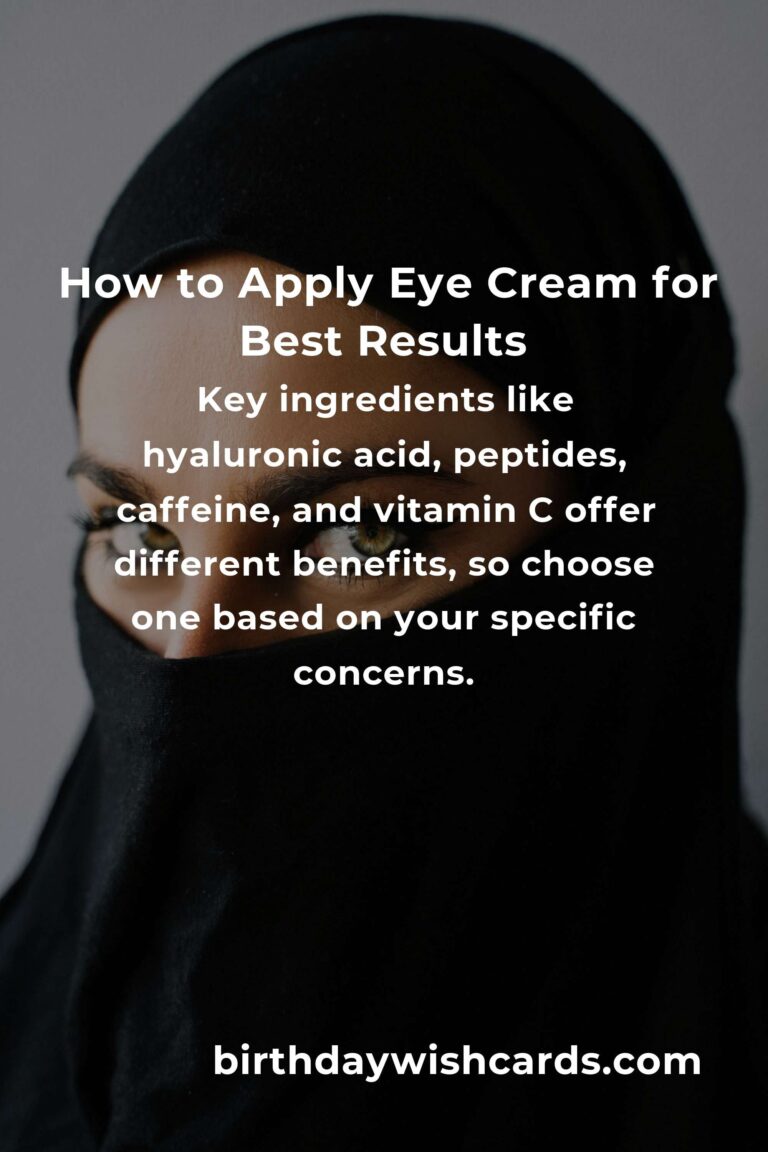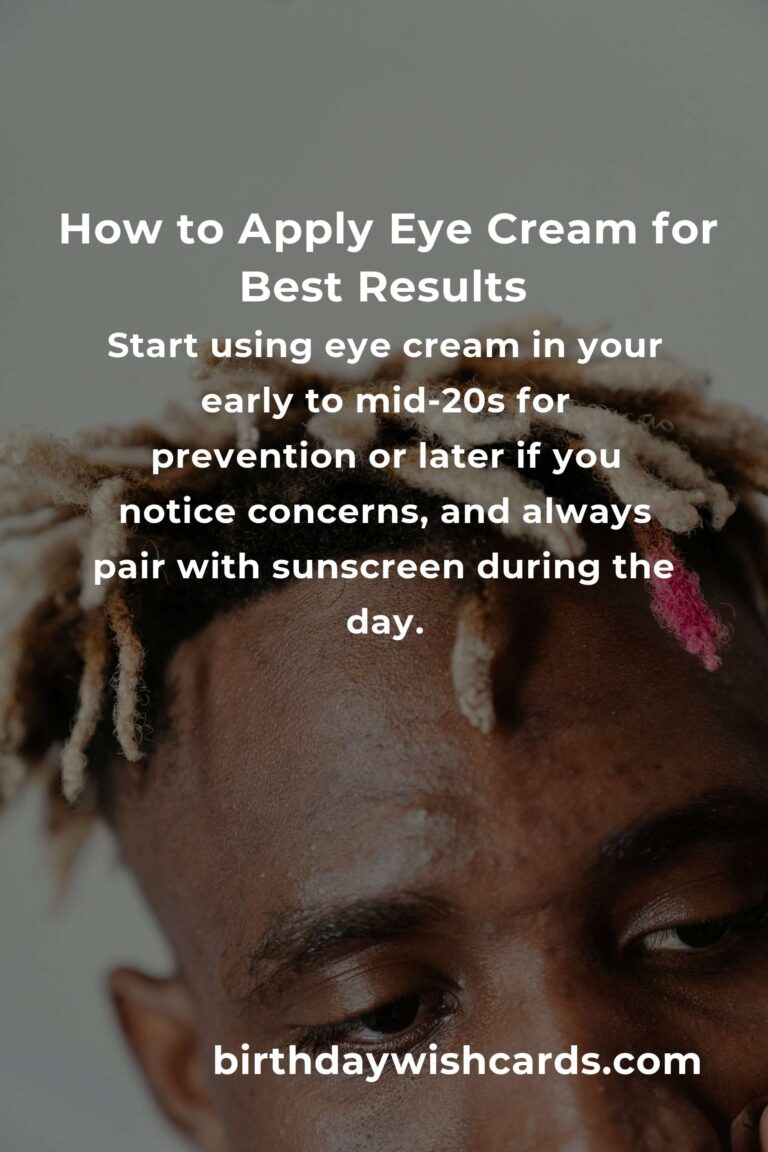
The delicate skin around your eyes often reveals the first signs of tiredness, stress, and aging. Eye creams have become a staple in many skincare routines, promising to hydrate, brighten, and diminish the appearance of fine lines or puffiness. If you’re new to eye creams, understanding their benefits, ingredients, and how to use them can be a game-changer for your skin health. In this comprehensive beginner’s guide, we’ll walk you through everything you need to know about eye creams – from the basics to expert application tips.
Why Do You Need an Eye Cream?
The skin under the eyes is thinner and more sensitive than the rest of your face. It contains fewer oil glands, making it prone to dehydration, fine lines, and irritation. Everyday factors like lack of sleep, harsh weather, prolonged screen time, and even genetics can exacerbate concerns such as dark circles, puffiness, and wrinkles.
Eye creams are formulated specifically to care for and protect this fragile area. They provide targeted care that regular moisturizers may not deliver. Whether your concern is dryness, aging, or simply looking refreshed, using an eye cream can make noticeable improvements over time.
Common Eye Area Concerns
Before choosing an eye cream, it’s helpful to identify your main concerns. The most common include:
- Dark Circles: Often caused by thin skin, genetics, or lifestyle factors like lack of sleep.
- Puffiness: Can stem from fluid retention, allergies, or late-night habits.
- Fine Lines and Wrinkles: Typically result from dryness, sun damage, and the natural aging process.
- Dryness: Due to minimal oil glands, the under-eye area loses moisture easily.
- Sensitivity and Irritation: Predisposed by the thinness of the skin, making it more reactive.
Key Ingredients to Look For
Eye creams often blend a variety of active ingredients to target specific issues. Here are some commonly recommended ingredients and what they do:
- Hyaluronic Acid: Delivers intense moisture and helps plump fine lines.
- Peptides: Support collagen and elastin production, firming the skin.
- Caffeine: Reduces puffiness by constricting blood vessels and diminishing swelling.
- Vitamin C: Brightens dark circles and fights free radical damage.
- Retinol: Promotes cell turnover for smoother texture and fewer wrinkles (choose low concentrations formulated for eyes).
- Ceramides: Strengthen the moisture barrier to prevent dryness.
- Niacinamide: Minimizes discoloration and soothes inflammation.
- SPF: Some daytime eye creams include sun protection to shield against UV damage.
Note: Always patch-test new products and consult with a dermatologist if you have sensitive skin or specific allergies.
How to Apply Eye Cream Properly
Using eye cream the right way enhances its effectiveness. Here’s a step-by-step guide:
- Begin with a clean, dry face. Remove all traces of makeup and sunscreen around the eyes.
- Dispense a pea-sized amount of cream onto your ring finger (the weakest finger, which applies the least pressure).
- Dot the product under each eye, starting at the inner corners and moving outward. Avoid getting too close to the lash line or eyelid unless the product is formulated for those areas.
- Gently pat (do not rub) the cream into the skin, focusing on the orbital bone beneath the eyes and along the brow bone.
- Allow the product to absorb before applying any other skincare or makeup.
When Should You Start Using Eye Cream?
There’s no one-size-fits-all age for beginning an eye cream regimen. Many experts recommend starting in your early to mid-20s as a preventive measure. Even if you’re older and just beginning to notice concerns, it’s never too late to help the delicate eye area with targeted care.
How Often Should You Use Eye Cream?
Most eye creams are designed for use twice daily: once in the morning and once before bed. Check the product’s label for instructions, as some ingredients (like retinol) are best used only at night to avoid sun sensitivity.
Choosing the Right Eye Cream for Your Skin Type
Your skin type plays a key role in choosing an effective eye cream. Consider the following tips:
- Dry Skin: Look for rich, hydrating formulas with hyaluronic acid, ceramides, or shea butter.
- Oily/Combination Skin: Choose lightweight gel-cream formulas that won’t feel heavy.
- Sensitive Skin: Avoid fragrances and harsh actives; opt for calming ingredients like peptides and niacinamide.
- Mature Skin: Seek out creams with peptides, antioxidants, and low-dose retinol for anti-aging benefits.
Myths and Facts About Eye Creams
Myth 1: Eye creams are just overpriced moisturizers.
Fact: While some overlap with facial moisturizers, eye creams are formulated with lower concentrations of actives and lighter textures to suit the sensitive eye area.
Myth 2: Eye creams can eliminate dark circles completely.
Fact: Genetics and bone structure often play a role in dark circles that creams alone can’t change. However, they can help reduce appearance caused by pigmentation and puffiness.
Myth 3: More product equals better results.
Fact: Overapplication can irritate the skin. A pea-sized amount is usually sufficient for both eyes.
Tips for Maximizing Your Eye Cream
- Store gel-based eye creams in the refrigerator for a soothing, de-puffing effect.
- Pair with a gentle under-eye massage tool or jade roller to promote circulation.
- Be consistent. Results can take a few weeks to become noticeable.
- Always follow up with sunscreen during the day, especially if using brightening or exfoliating ingredients.
Common Mistakes to Avoid
- Applying Directly on Eyelid or Lash Line: Only do so if the product is specifically formulated for those areas, as migration can cause irritation.
- Using Too Much: More product won’t boost effectiveness and may lead to puffiness or irritation.
- Neglecting Sunscreen: UV rays exacerbate fine lines and pigmentation. Remember your SPF!
- Rubbing Harshly: Always use a light tapping motion to apply.
Should You DIY Eye Creams?
While numerous at-home recipes tout natural ingredients, DIY eye creams may not undergo safety or efficacy testing. Preservative-free mixtures also carry risk of irritation and spoilage. When in doubt, opt for dermatologist-tested commercial products labeled as safe for the eye area.
Eye Cream Routine: Sample Order of Application
Wondering when to apply eye cream in your routine? Follow this order for optimal absorption:
- Cleanser
- Toner
- Serum (face)
- Eye Cream
- Moisturizer
- Sunscreen (AM)
This ensures your eye cream is sandwiched between lightweight serums and thicker moisturizers, improving its ability to work effectively.
FAQs About Eye Creams
- Can I use my regular facial moisturizer under my eyes?
In some cases, yes. However, dedicated eye creams are often gentler and less likely to irritate or cause milia (small white bumps). - How long before I see results?
Most people notice improvements within 4–6 weeks of consistent use, depending on the issue being addressed. - Can I layer more than one eye product?
Yes, but start with lighter textures first and let each layer absorb. Avoid overloading the area. - Do men need eye creams too?
Absolutely! The same principles and products can benefit every age and gender.
Conclusion: Start Your Eye Care Journey
Learning about eye creams is a proactive way to care for the most delicate part of your face. By understanding your skin’s needs, choosing the right product, and applying it with care, you’ll be well on your way to smoother, brighter, and more youthful-looking eyes. Remember: consistency and patience are key. Give your chosen eye cream the time and care it needs to work its magic!
Eye creams provide targeted care for the delicate, thin skin around your eyes, addressing dryness, puffiness, dark circles, and fine lines.
Key ingredients like hyaluronic acid, peptides, caffeine, and vitamin C offer different benefits, so choose one based on your specific concerns.
Apply a pea-sized amount of eye cream with gentle tapping motions, and be consistent in your skincare routine for best results.
Start using eye cream in your early to mid-20s for prevention or later if you notice concerns, and always pair with sunscreen during the day.
Myths such as ‘eye creams are just moisturizers’ and ‘more is better’ are debunked—eye creams are uniquely formulated and only a small amount is necessary.
#eyecream #skincare #beauty #eyecare #antiaging #skincareroutine



